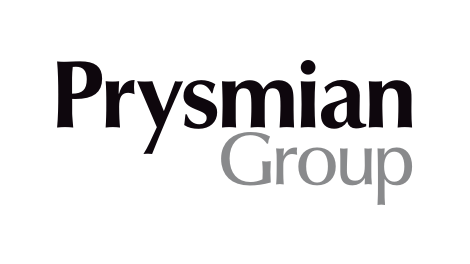Prysmian – Connect to Lead: Prysmian Group’s new business strategy
During the Capital Markets Day, held in Naples on the 5th of October, Massimo Battaini, Prysmian CEO-designated, presented the Group’s new business strategy.
Prysmian Group’s Capital Markets Day gathered the Executive Leadership Team to unveil to the Group’s shareholders the details of the Company’s new strategy to lead the energy transition and the digital transformation.
It is on this occasion, in fact, that the Group presented Connect to Lead, the new 5-years (2023-2027) business strategy aimed at capitalizing on the Company’s market position to seize the opportunities offered by the new market trends that are currently shaping the cable industry.
Embracing the convergence of key emerging market trends, such as the growing emphasis on renewable energy generation, the rapid proliferation of electrical applications, the pressing need for power grid enhancement and the pervasive impact of digital transformation, Prysmian Group has positioned itself at the forefront of innovation and adaptation, reflecting an astute understanding of the evolving market dynamics.
During his speech, Massimo Battaini, Prysmian Group’s CEO-designate, provided a comprehensive explanation of the pragmatic interplay between the company’s new business strategy and these prominent market trends, shedding light on the implications and practical significance of this fusion for both the Company and the cable industry.
As stated by Battaini, the main goal of the Company to be achieved through the new strategy is to transform the Group from a cable player into a cabling solution provider, mainly by focusing more on systems than just cables, and on more integrated and combined energy and telecom solutions.
While the new strategy will guarantee continuity with the past, conserving the strong stand for the company’s culture, it will also bring a new focus to drive the company through a new pathway of growth.
Connect to Lead: the pillars of the new strategy
“Connect, to lead. This is the name of our strategy: we want to lead the market while we connect the world, while we are enabling the energy transition and the digital transformation”.
Massimo Battaini
So, what does the new strategy consist of?
It is based on four pillars, crucial to addressing the new market dynamics and seizing the growth opportunities:
- Self-funded capacity expansion
- Balanced and innovative product portfolio
- People empowerment
- Business segmentation

Self-funded capacity expansion
The first pillar of the strategy consists in investments to support organic growth through consistent cash flow generation. This means that the company will keep investing in capacity expansion and capability enhancement to continue serving its customers and keep pace with demand growth.
In order to support this growth, capex is going to double from 310 million to 540 million over the next 5 years.
Balanced and innovative portfolio
Prysmian Group’s portfolio reflects the focus – or, as we could say, obsession – the company has for innovation. One of the goals the Group aims to achieve with this new strategy, in fact, is no longer just the traditional innovation related to the improvement of electrical performance; it is a new innovation approach that consists of electrical performance enhancement, surely, but that mainly focuses on moving towards more sustainable cabling solutions.
A balanced portfolio and continuous innovation are hence crucial to achieve the Company’s goal to help its customers decarbonize their operations and achieve their sustainability goals.
To provide some examples of the latest innovative products and cutting-edge technologies launched by Prysmian and connected with the highlighted market trends:
- 525 kV P-Laser HVDC interconnectors, in terms of renewable energy generation;
- E3X technology for OHL power enhancement, in terms of power grid enhancement;
- Sirocco, the first 180μm fibre cable, in terms of digital transformation;
- PRYSOLAR and PRY-CAM, in terms of electrical applications growth.
People empowerment
At Prysmian, the true value of the workforce is recognized and valued as a key pillar of the Company’s success. This is why the Group invests a lot in fostering creativity and collaboration among the employees and in the development of their skills, in order to boost capabilities and knowledge.
And this is where the true value of the company lies, and the reason why Prysmian continues to invest in its human capital , always finding new ways to make its people feel more included and engaged.
Business segmentation
Last but not least, the Group’s structure will evolve from the current three segments to four new segments of businesses, which exactly mirror the four market trends identified (i.e. renewable transmission, power grid, electrification, and digital solutions). Of course, the new segments won’t operate as separate and distinct entities, but synergically, in order to leverage on opportunities such as one-stop-shop, operational efficiencies and – more importantly – market edging.
This new segmentation drives more focus on market trends and enhances the go to market effectiveness, also providing more visibility of how the Group plays in the different spaces.
This is what the new segmentation consists of:

Through Connect to Lead, meaning through leveraging on the four drivers of the strategy mentioned above, Prysmian Group is expecting to drive the Company’s EBITDA from 1.5 billion of last year to 2 billion EBITDA by 2027.
“Connect to Lead, the name of our strategy, sets the end of this first part of our successful journey and marks the start of new pathways to greater growth”.
Massimo Battaini
SourcePrysmian Group
EMR Analysis
More information on Prysmian: See the full profile on EMR Executive Services
More information on Valerio Battista (Group Chief Executive Officer, Prysmian Group until the 2024 Annual General Meeting (April)): See the full profile on EMR Executive Services
More information on Massimo Battaini (Group Chief Operating Officer and Executive Director, Prysmian Group + Designated Chief Executive Officer at the 2024 Annual General Meeting (April)): See the full profile on EMR Executive Services
More information on Connect to Lead, the new 5-years (2023-2027) Business Strategy by Prysmian: See the full profile on EMR Executive Services
More information on E3X® Technology by Prysmian: https://na.prysmiangroup.com/markets/utilities-and-power-grids/power-distribution/focus-on/e3x-technology + The utility industry’s first heat-dissipating overhead conductor that transforms the power grid through reduced power loss, increased power carrying capacity and lower costs.
E3X Technology features a thin, durable coating that is applied to the surface of any TransPowr® overhead conductor. This heat-dissipating coating increases emissivity and reduces absorptivity, improving energy effectiveness and efficiency by allowing for a higher ampacity rating, reduced operating temperature and lower losses for a given conductor size, or reduced conductor size for a given ampacity rating—transforming power grid sustainability, reliability, resilience and cost of ownership.
More information on Sirocco by Prysmian: https://www.prysmiangroup.com/en/sirocco-microduct-cables + Using Prysmian’s BendBright-A1 200 µm single-mode fibres (G.657.A1), Sirocco microduct cables have a smaller diameter than other cables on the market, making it possible to install more fibres within a limited space.
More information on Prysolar by Prysmian: https://www.prysmiangroup.com/en/markets/industries/renewables/solar/prysmian-prysolar + The PV or solar cables are part of the Balance of System (BOS) in a PV installation and represent only 1-2% of the total installation cost. Nevertheless, they are critical system components, and their failure disrupts power generation. Utility-scale solar farms are growing in size and operating voltage, and the geographical areas where they are installed are more and more subject to extraordinary climate events: extreme and unpredictable. Extreme climate events like heavy rains and floods may cause cable deterioration and failure with negative consequences on power generation capacity, reliability of power supplies and return on investment.
More information on PRY-CAM Technology by Prysmian: See the full profile on EMR Executive Services
EMR Additional Notes:
- Grid, Microgrids and DERs:
- The power grid is a network for delivering electricity to consumers. The power grid includes generator stations, transmission lines and towers, and individual consumer distribution lines.
- The grid constantly balances the supply and demand for the energy that powers everything from industry to household appliances.
- Electric grids perform three major functions: power generation, transmission, and distribution.
- A microgrid is a small-scale power grid that can operate independently or collaboratively with other small power grids. The practice of using microgrids is known as distributed, dispersed, decentralized, district or embedded energy production.
- Smart Grid is any electrical grid + IT at all levels . Micro Grid is a group of interconnected loads and DERs (Distributed energy resources) within a clearly defined electrical and geographical boundaries witch acts as a single controllable entity with respect to the main grid.
- Distributed energy resources (DERs) are small-scale electricity supply (typically in the range of 3 kW to 50 MW) or demand resources that are interconnected to the electric grid. They are power generation resources and are usually located close to load centers, and can be used individually or in aggregate to provide value to the grid.
- Common examples of DERs include rooftop solar PV units, natural gas turbines, microturbines, wind turbines, biomass generators, fuel cells, tri-generation units, battery storage, electric vehicles (EV) and EV chargers, and demand response applications.
- Distributed energy resources management systems (DERMS) are platforms which helps mostly distribution system operators (DSO) manage their grids that are mainly based on distributed energy resources (DER).
- DERMS are used by utilities and other energy companies to aggregate a large energy load for participation in the demand response market. DERMS can be defined in many ways, depending on the use case and underlying energy asset.
- HVDC Light:
- HVDC Light is the successful and environmentally-friendly way to design a power transmission system for a submarine cable, an underground cable, using over head lines or as a back-to-back transmission. HVDC Light is HVDC technology based on voltage source converters (VSCs).
- HVDC Light is designed to transmit power underground and underwater, also over long distances. It offers numerous environmental benefits, including “invisible” power lines, neutral electromagnetic fields, oil-free cables and compact converter stations.
- As its name implies, HVDC Light is a dc transmission technology. However, it is different from the classic HVDC technology used in a large number of transmission schemes. Classic HVDC technology is mostly used for large point-to-point transmissions, often over vast distances across land or under water. It requires fast communications channels between the two stations, and there must be large rotating units – generators or synchronous condensers – present in the AC networks at both ends of the transmission. HVDC Light consists of only two elements: a converter station and a pair of ground cables. The converters are voltage source converters, VSC’s. The output from the VSC’s is determined by the control system, which does not require any communications links between the different converter stations. Also, they don’t need to rely on the AC network’s ability to keep the voltage and frequency stable. These feature make it possible to connect the converters to the points bests suited for the AC system as a whole.
- HVDC (High-Voltage Direct Current):
- Key enabler for a carbon-neutral energy system. It is highly efficient for transmitting large amounts of electricity over long distances, integration of renewables and interconnecting grids, opening up for new sustainable transmission solutions.
- HVDC Links:
- The first successful HVDC experimental long distance line (37 miles) was made at Munich, Germany in 1882 by Oskar Von Miller and fellow engineers.
- HVDC allows power transmission between AC transmission systems that are not synchronized. Since the power flow through an HVDC link can be controlled independently of the phase angle between source and load, it can stabilize a network against disturbances due to rapid changes in power.
- An HVDC line has considerably lower losses compared to HVAC over longer distances.

- Neu Connect (the first power interconnection between Great Britain and Germany): https://neuconnect-interconnector.com +
- The NeuConnect Interconnector will create the first direct power link between Germany and Great Britain, connecting two of Europe’s largest energy markets for the first time. Around 720km of land and subsea cables will form an ‘invisible highway’ allowing up to 1.4GW of electricity to move in either direction, enough to power up to 1.5 million homes over the life of the project.
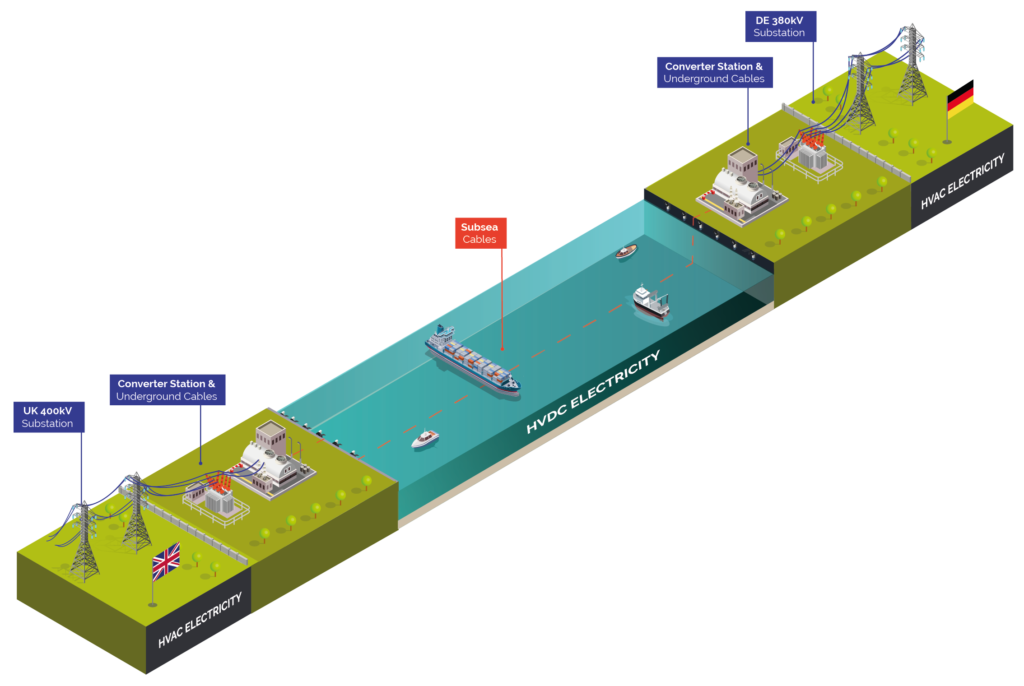
- The Tyrrhenian Link: https://www.terna.it/en/projects/public-engagement/Tyrrhenian-link +
- Connecting Sicily with Sardinia and the Italian peninsula via a double underwater cable: a new electricity corridor at the centre of the Mediterranean; the Tyrrhenian Link. At 950 kilometres long and with a capacity of 1000 MW, this is an infrastructure initiative of international significance, another step towards a more sustainable energy future. The link will improve electricity exchange capacity, facilitate the development of renewable energy sources, and the reliability of the grid.
- The overall project involves two sections: EAST from Sicily to Campania and WEST from Sicily to Sardinia.
- The East section is 480 kilometres long and connects the Fiumetorto landing point, in the municipality of Termini Imerese in Sicily, with the landing point in Torre Tuscia Magazzeno, near Battipaglia in Campania.
- The WEST section is approximately 470 kilometres long and connects the Fiumetorto landing point to the one in Terra Mala, in Sardinia.

- The Viking Link: https://viking-link.com +
- World’s longest power interconnection. the Viking Link is a 1400 MW high voltage direct current (DC) electricity link between the British and Danish transmission systems connecting at Bicker Fen substation in Lincolnshire and Revising substation in southern Jutland, Denmark.

- The North Sea Link: https://northsealink.com/ + North Sea Link is a 720 kilometre subsea interconnector linking the electricity systems of the UK and Norway. The 1400 megawatt interconnector stretches from Blyth in the UK, across the North Sea, to Kvilldal in Norway.
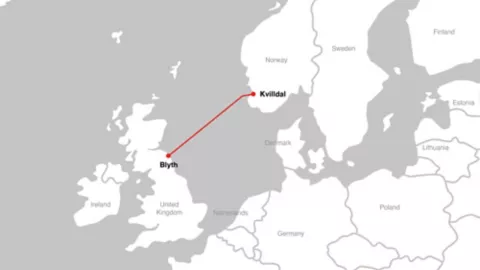
- The Hertel–New York interconnection line: https://www.hydroquebec.com/projects/hertel-new-york-interconnection/ + The Hertel–New York interconnection line project aims to supply clean, renewable energy to New York City. In Québec, the project involves the construction of a line that will span 57.7 km (56.1 km underground and 1.6 km underwater). This 400-kV direct current line will connect Hertel substation in La Prairie to an interconnection point in the Rivière Richelieu at the Canada–United States border.

- The Biscay Gulf Project: https://www.inelfe.eu/en/projects/bay-biscay + The electricity interconnection between Gatika (Spain) and Cubnezais (France) will be the first fundamentally submarine interconnection between Spain and France. This project will increase the exchange capacity from 2,800 to 5,000 MW, improving the safety, stability and quality of electricity supply between the two countries and also with the rest of Europe.
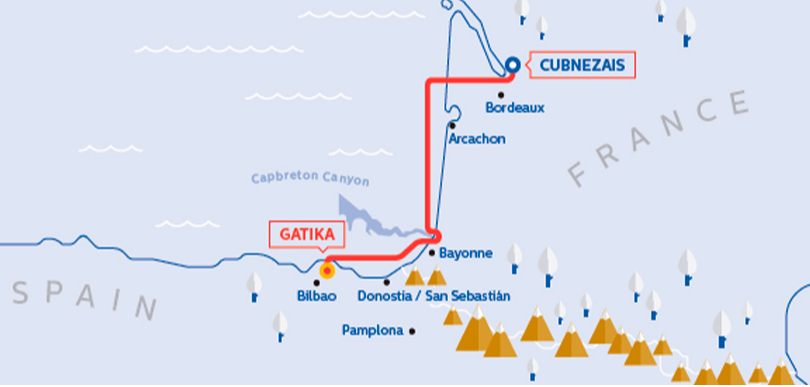
- The Eastern Green Link 2 (EGL2): https://www.ssen-transmission.co.uk/projects/project-map/eastern-green-link-2/ + The Eastern Green Link 2 project is a proposal to install a sub-sea high-voltage direct current (HVDC) cable from Sandford Bay, at Peterhead, to Drax in England. There is currently a large amount of forecasted generation that will require connection to the electricity network in the coming years and as such we are proposing several upgrades to the transmission network across the north of Scotland to facilitate this. The Eastern HVDC Link will play a key role in helping achieve our Net-Zero targets.
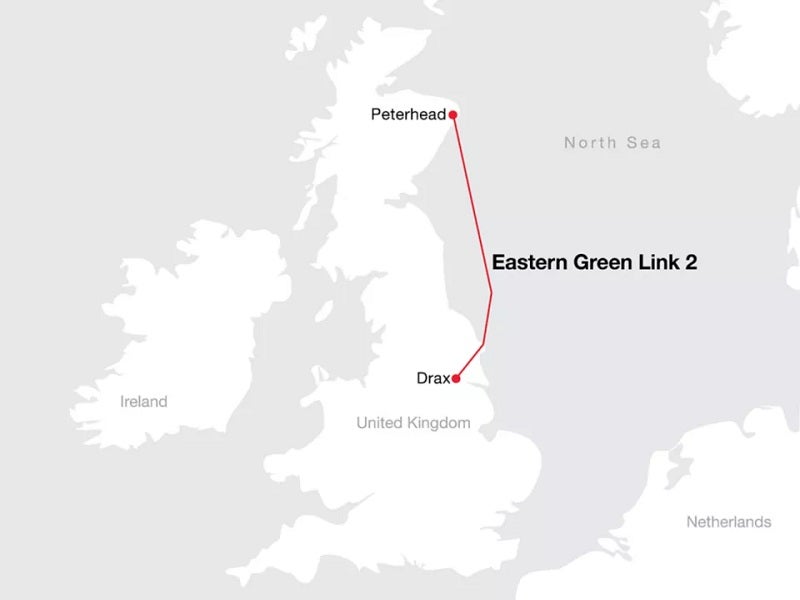
- The EuroAsia Interconnector: https://euroasia-interconnector.com/ + EuroAsia Interconnector Limited is the official EU project developer of the 2,000MW electricity interconnector between Israel, Cyprus, Greece and Europe. The EuroAsia Interconnector is a leading European Project of Common Interest (PCI) labelled as an EU “electricity highway” connecting the national electricity grids of Israel, Cyprus and Greece through a 1,208 km subsea HVDC cable.
- The EuroAsia Interconnector comprises the electricity interconnection between the grids of Israel, Cyprus, Greece through a subsea DC cable and with HVDC onshore converter stations at each connection point, with a total capacity of 2000MW. The project is an energy highway bridging Asia and Europe, with a total length of 1,208 km. It creates a reliable alternative route for the transfer of electric energy to and from Europe.


